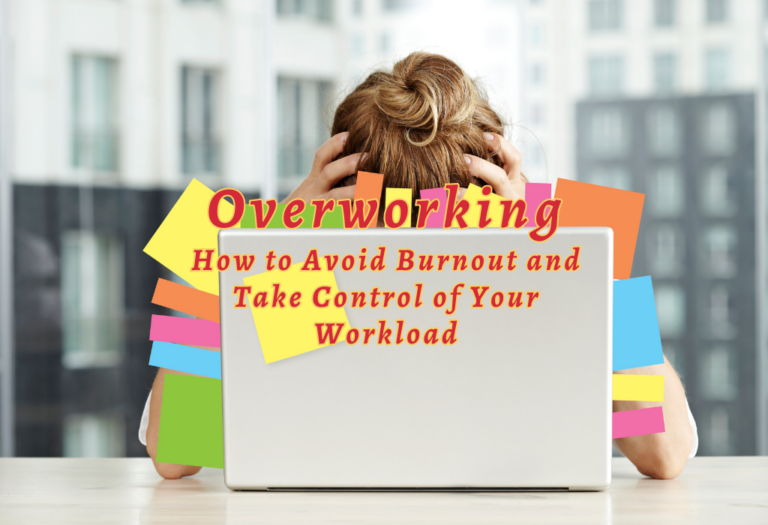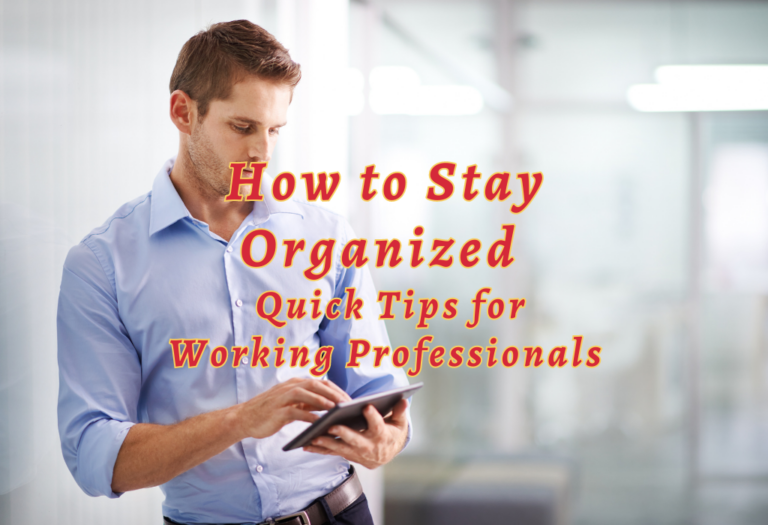10 Tips to Increase Efficiency in the Workplace
Are you looking for ways to increase your workplace productivity? If so, you’ve come to the right place! This blog post will provide you with 10 surefire tips to help you quickly and effectively increase efficiency in the workplace.
Working smarter, not harder, is the key to improving efficiency and streamlining the sometimes mundane tasks of the average workplace. Luckily, with the right mentality and a few life hacks, increasing productivity can be easy and satisfying. Let’s get started!
Quick Summary
One of the best ways to be more efficient in the workplace is to set clear goals for yourself and break down large tasks into smaller, manageable blocks. Additionally, utilizing organizational tools such as to-do lists and calendars to keep track of tasks and deadlines can help keep you on task.

What do we mean by being Efficient?
Being efficient means being organized and productive with your time. It means being mindful of the tasks you have to accomplish and the deadlines you have to meet. To be efficient, you must create a system that works for you. This could mean creating a daily or weekly to-do list, setting reminders for yourself, or even using a calendar app to keep track of your commitments.
Setting Goals for Maximum Efficiency
Setting goals for maximum efficiency is an important step in creating a streamlined workplace environment. Doing so will help employees understand the mission, expectations, and desired results that lead to success. Goal setting can also help employers measure progress and hold teams accountable for their performance. By setting tangible objectives and prioritizing tasks, staff can stay on track to achieve productivity-driving milestones.
Setting Quantifiable Goals:
Many experts argue that when workers have quantifiable goals to strive for, it increases motivation and engagement. It paints a clear picture of what each individual is working toward and gives them something to strive for beyond just showing up for work each day. Other professionals contend that trying to micromanage employees with goals destroys creativity and discourages employees from taking initiative on projects.
Creating Realistic Goals:
It’s important to create goals that are realistic and achievable (with additional stretch goals in certain cases). Everyone wants to win but having overly ambitious goals can be discouraging to employees while fostering competition between team members rather than collaboration. Striking a balance between accountability, motivation, and productivity is the best approach.
Now that we’ve discussed how to set goals for maximum efficiency, let’s move on to the next section which covers how employers can identify their specific goals.
Key Summary Points
Setting goals for maximum efficiency is an important step in creating a streamlined workplace environment that can help staff understand the mission and hold them accountable for their performance. It can lead to increased motivation and engagement. However, it is important to ensure that goals are realistic and achievable and foster collaboration as opposed to competition among team members. Now let’s move on to identifying specific goals.
Identify Your Goals
When it comes to increasing efficiency in the workplace, it is important to identify your overall goals and objectives.
Individual Goals:
From an individual perspective, identify your desired outcomes for each task or project you are assigned. Doing so will help you prioritize tasks and stay on track. As a manager, create specific action points and deadlines that can be tied to team goals to ensure everyone stays motivated and focused. Additionally, provide feedback along the way to empower employees and help them stay on track.
Organizational Goals:
From an organizational perspective, leaders should identify their company’s overall objectives to ensure that teams are headed in the right direction. By setting larger organizational goals first, then breaking them down into smaller projects, teams can establish their own goals, timelines, and critical tasks for each project. This helps individuals focus on the bigger picture while keeping their development goals at the forefront of every task.
Well-defined Goals:
Having well-defined goals in place can also help organizations maintain efficient communication within the workplace by creating deadlines and milestones to work. Defining the expected results of a project upfront will eliminate overlapping responsibilities, clarify roles and expectations, and prevent misunderstandings among staff members.
Identify Individual and Organizational Goals:
Identification of both individual and organizational goals can give employees a sense of purpose, stability, structure, and focus that might otherwise be lacking without an end goal in sight. With this in mind, setting schedules and prioritizing tasks become much more achievable for individuals as well as for groups working together.
Now that we have identified our organizational and team goals, it’s time to move forward with how best to set schedules and prioritize each task accordingly to reach those goals efficiently.
Setting Schedules and Prioritizing Tasks
Setting schedules and prioritizing tasks are key components of increasing efficiency in the workplace. In most cases, setting up a daily schedule will help achieve some level of work-life balance and create more structure, allowing employees to feel less overwhelmed with all the tasks on their plates.
Set expectations from Employees:
Employers need to set expectations and make sure all goals are communicated effectively. Workload should be delegated depending on the employee’s capabilities, taking into account how much time they can commit without becoming overworked or burnt out.
Prioritizing Tasks:
Once a plan has been established, employees should prioritize their tasks according to importance, one of the most effective ways to get stuff done! Those that are urgent and need immediate attention should come first while everything else can be worked through at a steady pace.
Communication is Key:
There may be times when teammates are overwhelmed by too many tasks and deadlines. While it may involve hard conversations such as declining requests or pushing deadlines back, it is important to keep in mind that communication here is key to avoiding misunderstandings and disappointments down the line.
To ensure success here, setting schedules ahead of time can help you allot appropriate time for each task so that all are completed on time while still allowing time for breaks. Making a routine and sticking to it helps you focus your attention on what needs to be done and is proven to increase productivity levels. Next, we’ll discuss the importance of making a routine and sticking to it for ultimate efficiency in the workplace.
Making a Routine and Sticking to it
Many highly efficient work environments achieve success by making a routine and sticking to it. It’s especially helpful for those with multiple responsibilities to make a plan to keep track of various tasks. Creating a schedule can also help people stay on task and allows them to be better prepared for meetings or projects. For example, if employees understand when their meetings take place, they have time to plan their days around it, which can save time and energy in the long run.
Benefits of Spontaneous Alterations in Plans:
However, there are benefits to spontaneous alterations in plans, as well. The unexpected can bring clarity and a new perspective that was otherwise not considered. Incorporating the occasional spontaneous change of schedule may enable workers to be productive in unique ways other than following a strict routine.
It is important to balance the two approaches: having a set routine but also being open to changes that may improve the workplace atmosphere or general productivity. Working on this balance is essential for any successful business and a key factor for increasing efficiency in the workplace.
Supportive Work Environment
In addition to making and sticking to a routine, creating a supportive work environment is key for efficiency in the workplace. In the following section, we will discuss how to create a Supportive Work Environment.
Benefits of creating a Supportive Work Environment:
Creating a supportive work environment is essential for any business that is looking to increase efficiency in the workplace. With a comfortable and resourced environment, employees can focus on their performance, allowing them to optimize output. Moreover, it is critical to note that creating a supportive team environment helps mitigate the feeling of being overwhelmed and instead encourages collaboration.
Should Supportive Work Environment be Prioritized?
Though a supportive work culture undoubtedly has its advantages, many businesses still debate whether it should be prioritized. On one hand, many assert that providing a pleasant work environment and allocating resources to ensure employees are well taken care of, is an investment that should be made to ensure both employee well-being and productivity. On the other hand, some may argue that not every need of each employee can or should be met, as this will cause higher financial costs that might go unacknowledged with performance improvements.
Supportive Work Environment increases Efficiency:
Ultimately creating a supportive work environment will benefit not only individual employees but also the wider team as it helps improve overall motivation and engagement. This alleviates stress levels on both personal and corporate levels, allowing everyone to optimize productivity. As such, it is important for organizations looking to increase efficiency in the workplace to consider how they can create a supportive work culture.
Leading into the next section about “Motivating Employees”, while a comfortable and supportive work environment creates a sound foundation for success, it is only part of what contributes towards increased efficiency in the workplace. It is equally important to focus on motivating employees so they can remain engaged and productive throughout their daily tasks.
Motivating Employees
By encouraging employees to recognize and celebrate their accomplishments, employers can create a positive work environment that promotes workplace efficiency and helps keep employees motivated to reach their goals. How you mentor, lead, and inspire your employees should be tailored to fit each individual and their unique levels of motivation. Factors such as job satisfaction, company culture, flexibility, salary, and recognition all play a role in inspiring your workers to give their best.
Rewarding Employees:
Rewards such as flexible working hours, bonuses, and additional holidays are attractive incentives that help to increase employee engagement and productivity. For example, offering a bonus or an extra day off for meeting a particular target may encourage people to work harder towards these goals.
Drawbacks of Rewarding:
On the other hand, there can be drawbacks when it comes to rewarding individuals. Focusing on monetary rewards alone could lead to a ‘money-motivated’ culture where employees will only go above and beyond expectations when being offered a financial incentive; this may not only diminish creativity but also create bitterness amongst co-workers who feel they are not adequately rewarded for their efforts.
Non-monetary Incentives:
It is important to consider how non-monetary incentives such as public recognition, respect from colleagues, and feeling valued can be equally powerful motivators.
Acknowledging individual successes in the form of verbal compliments or awards can go a long way toward boosting morale within the office space.
Key to motivating employees:
The key to motivating employees is understanding what is important to each member of staff and creating an environment where everyone feels respected and rewarded for their contributions. When workers feel motivated, they are more likely to achieve higher levels of productivity as well as have an overall more positive outlook on their job and workplace environment.
Now that we have discussed strategies for employee motivation, let’s move on to the next section about optimizing your workspace.
Optimizing Your Workspace
Organization is key when it comes to managing productivity levels in the workplace, and nowhere is this more evident than in optimizing your workspace. Making sure that all necessary tools and documents are readily available can be the difference between success and failure when meeting deadlines.
Importance of Creating a Clean and Managed Environment:
It is important to create an environment where everything has its place. This will save time that would have been wasted searching through drawers or desks for that one document you need at the very last minute. Keeping the space clean and free of clutter will also help avoid distractions caused by a less-than-ideal environment.
The physical layout of a Workspace:
The physical layout of a workspace can also directly affect both performance and morale in the workplace. Having ergonomically designed furniture or adjustable office chairs can reduce stress on the body from sitting or standing for extended periods, which can also lead to improved energy levels throughout the day. Additionally, judicious use of personal items such as a small plant or family photo can provide pleasant distractions from long days of work.
Dedicating Extra Space:
However, some might argue against dedicating extra space to configure their workspace because there is the risk of falling into procrastination when given too much freedom to personalize one’s area in favor of getting down to business quickly. In this situation, team leaders should encourage their staff members to find a compromise between comfort and efficiency where they are content with their space without compromising their work duties.
Now that we have discussed how to optimize your workspace, let us move on to the next topic: Dealing with Stress in the Workplace.
Dealing with Stress in the Workplace
It is important to recognize that stress is a normal part of day-to-day life, especially in the workplace. With tight deadlines and numerous tasks on your plate, dealing with stress can quickly become overwhelming. Though oftentimes it’s easier said than done, it is essential to find time to regularly de-stress to remain productive and motivated.
Pros and Cons of Stress:
There have been multiple studies conducted to weigh the pros and cons of dealing with stress. On the one hand, stress has been linked to increased motivation and productivity levels as employees strive to meet their goals in a shorter amount of time. However, if not managed properly, excessive levels of stress can be detrimental to an employee’s mental health, leading to burnout or absenteeism from work.
Role of Employees and Employers in Dealing with Stress:
At the end of the day, it is important for employers and employees alike to be aware that too much stress can cause long-term damage. Employees must take initiative by exercising self-care and engaging in activities that promote relaxation; employers are encouraged to provide a healthy environment for their staff through initiatives such as making mental health days available or offering additional flexibility during busy seasons.
To achieve maximum efficiency in the workplace, it is essential to properly manage stress levels. To do this effectively, both employers and employees need to work together to create an atmosphere that allows colleagues to de-stress while meeting their goals on time. With that said, let’s transition into discussing strategies for achieving maximum productivity.
Strategies for Achieving Maximum
When it comes to increasing productivity in the workplace, several strategies can improve efficiency and minimize downtime. Knowing how and when to use these strategies is the key to boosting your overall performance.
Setting Realistic Goals:
The first and most important strategy for achieving maximum productivity is setting realistic goals. Having clear objectives in mind can help to focus energy on the task at hand. Doing this will also motivate you to get things done and measure progress. Additionally, breaking down large tasks into smaller chunks and taking breaks throughout the day can help to maximize productivity and accuracy, allowing team members to focus on individual tasks without being overwhelmed with a project as a whole.
Communication with Coworkers and Colleagues:
Another important strategy for improving productivity is maintaining regular communication with coworkers and colleagues. This includes both verbal and written communication. Keeping everyone informed of progress on tasks or projects can alleviate confusion or miscommunications which could cost valuable time later on—and always remember to ask questions if something isn’t clear! Similarly, providing feedback is an essential component of keeping morale high in the workplace, ensuring that employees know what they’re doing is appreciated and resulting in fewer mistakes due to burnout or fatigue.
Organizing Tasks
Organizing tasks based on importance or deadlines is another way of developing better practices in the workplace, allowing people to prioritize and focus on urgent deadlines efficiently. Similarly, delegating tasks where appropriate, rather than trying to accomplish everything yourself, can free up time while also empowering others to work towards a common goal effectively.
Using Technology:
Using new technology or automation methods wisely but cautiously can save both time and money. Companies should be sure not to over-rely on automation when more skilled labor may be cheaper or more efficient in the long run although automating routine tasks can free up time for higher-value work if done correctly.
Establishing Clear Guidelines:
Establishing clear guidelines within the organization regarding working hours, overtime expectations and other necessary information helps avoid any unwanted confusion or issues that could disrupt workflow. Having alternative plans available in case of emergency scenarios will help protect operations from unnecessary downtime as well.
These strategies all have the potential to help increase productivity significantly within an organization if implemented correctly—allowing for maximum growth potential with minimal disruption or disturbances.
Frequently Asked Questions Answered about Tips to increase efficiency in workspace
Conclusion
Ultimately, increasing efficiency at work is dependent on attempting to create a balanced and optimal workplace environment. Technology has enabled us to become increasingly efficient, but it can also create stress and distraction if not used properly. It is important to look at the bigger picture, taking into account employee well-being as well as improving processes, to increase overall productivity. Reducing bureaucracy and administrative tasks, offering the right tools and training, and encouraging collaboration and open communication are all integral parts of ensuring employees are productive and efficient. Taking into consideration an individual’s strengths and weaknesses can also help to create a personalized approach for each worker when trying to increase efficiency in the workplace.
The debate surrounding how best to increase efficiency in the workplace could be seen as a balancing act between too much constraint and control or too much freedom within a company. On the one side, certain aspects of work need structure and rules to ensure the completion of tasks while on the other side, employees need some degree of flexibility to be motivated and inspired by their work environment. While there is no one-size-fits-all solution for all businesses, following these 10 tips should help create an efficient workplace that promotes collaboration, creativity, and innovation. Doing so will ultimately lead to an organization that not only increases efficiency but also creates happy employees who are driven by meaningful goals.






